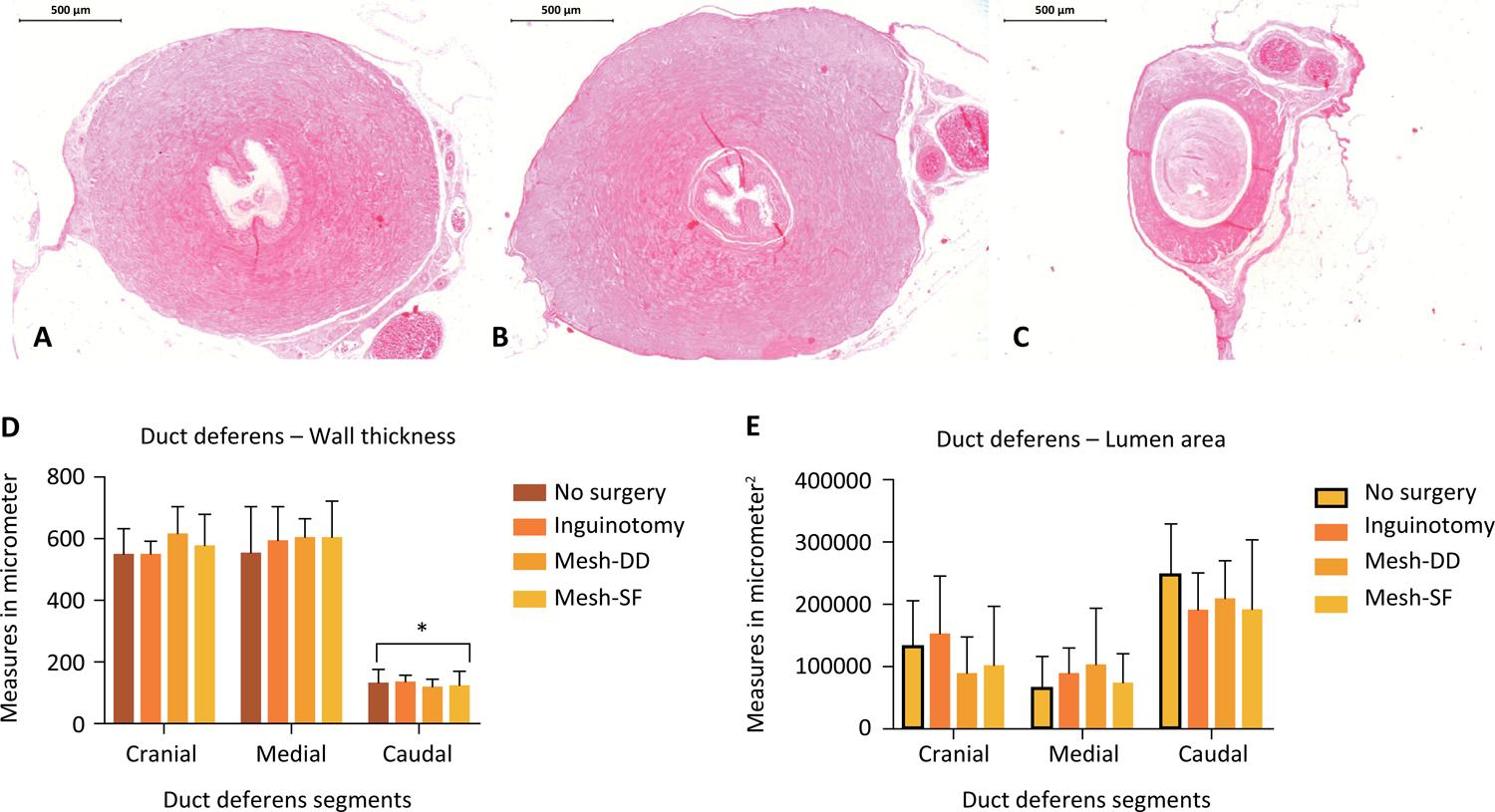Abstract
Purpose
To evaluate the effect of a PP mesh on duct deferens morphology, testicular size and testosterone levels.
Methods
Forty adult male rats were distributed into groups: 1) no surgery; 2) inguinotomy; 3) mesh placed on the duct deferens; and 4) mesh placed on the spermatic funiculus. After 90 postoperative days, the inguinal region was resected, and blood samples were collected for the measurement of serum testosterone (pg/dl). The ducts deferens were sectioned in three axial sections according to the relationship with the mesh — cranial, medial and caudal. The wall thickness and duct deferens lumen area were measured.
Results
The morphology of the duct deferens was preserved in all groups. The mesh placement did not alter this morphology in any of the analyzed segments. Surgery, with or without mesh placement, did not alter the morphology, wall thickness or lumen area (p>0.05). In all operated groups, serum testosterone levels were similar (p>0.05) but there was a decrease in testicle size (p<0.05).
Conclusion
Surgery, with or without mesh placement, did not alter the morphology of the duct deferens and, although this treatment resulted in testicular size reduction, it did not affect serum testosterone levels.
Hernia; Surgical Mesh; Polypropylenes; Vas Deferens; Testis; Rats




